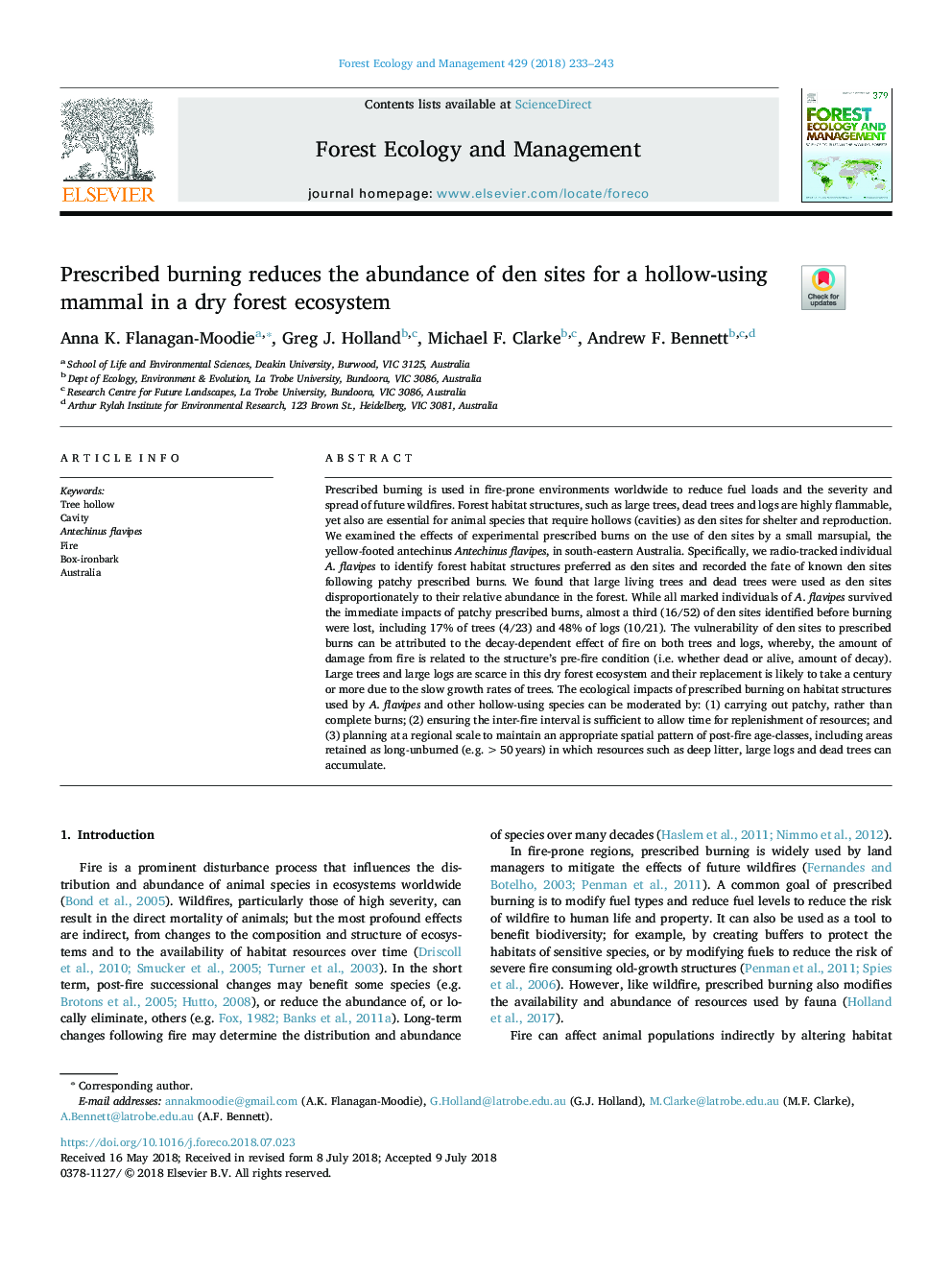| کد مقاله | کد نشریه | سال انتشار | مقاله انگلیسی | نسخه تمام متن |
|---|---|---|---|---|
| 6541436 | 1421331 | 2018 | 11 صفحه PDF | دانلود رایگان |
عنوان انگلیسی مقاله ISI
Prescribed burning reduces the abundance of den sites for a hollow-using mammal in a dry forest ecosystem
ترجمه فارسی عنوان
سوزانده شده، فراوانی مکان های دندانه ای را برای یک پستاندار با استفاده از توخالی در اکوسیستم جنگل خشک کاهش می دهد
دانلود مقاله + سفارش ترجمه
دانلود مقاله ISI انگلیسی
رایگان برای ایرانیان
موضوعات مرتبط
علوم زیستی و بیوفناوری
علوم کشاورزی و بیولوژیک
بوم شناسی، تکامل، رفتار و سامانه شناسی
چکیده انگلیسی
Prescribed burning is used in fire-prone environments worldwide to reduce fuel loads and the severity and spread of future wildfires. Forest habitat structures, such as large trees, dead trees and logs are highly flammable, yet also are essential for animal species that require hollows (cavities) as den sites for shelter and reproduction. We examined the effects of experimental prescribed burns on the use of den sites by a small marsupial, the yellow-footed antechinus Antechinus flavipes, in south-eastern Australia. Specifically, we radio-tracked individual A. flavipes to identify forest habitat structures preferred as den sites and recorded the fate of known den sites following patchy prescribed burns. We found that large living trees and dead trees were used as den sites disproportionately to their relative abundance in the forest. While all marked individuals of A. flavipes survived the immediate impacts of patchy prescribed burns, almost a third (16/52) of den sites identified before burning were lost, including 17% of trees (4/23) and 48% of logs (10/21). The vulnerability of den sites to prescribed burns can be attributed to the decay-dependent effect of fire on both trees and logs, whereby, the amount of damage from fire is related to the structure's pre-fire condition (i.e. whether dead or alive, amount of decay). Large trees and large logs are scarce in this dry forest ecosystem and their replacement is likely to take a century or more due to the slow growth rates of trees. The ecological impacts of prescribed burning on habitat structures used by A. flavipes and other hollow-using species can be moderated by: (1) carrying out patchy, rather than complete burns; (2) ensuring the inter-fire interval is sufficient to allow time for replenishment of resources; and (3) planning at a regional scale to maintain an appropriate spatial pattern of post-fire age-classes, including areas retained as long-unburned (e.g. >50â¯years) in which resources such as deep litter, large logs and dead trees can accumulate.
ناشر
Database: Elsevier - ScienceDirect (ساینس دایرکت)
Journal: Forest Ecology and Management - Volume 429, 1 December 2018, Pages 233-243
Journal: Forest Ecology and Management - Volume 429, 1 December 2018, Pages 233-243
نویسندگان
Anna K. Flanagan-Moodie, Greg J. Holland, Michael F. Clarke, Andrew F. Bennett,
